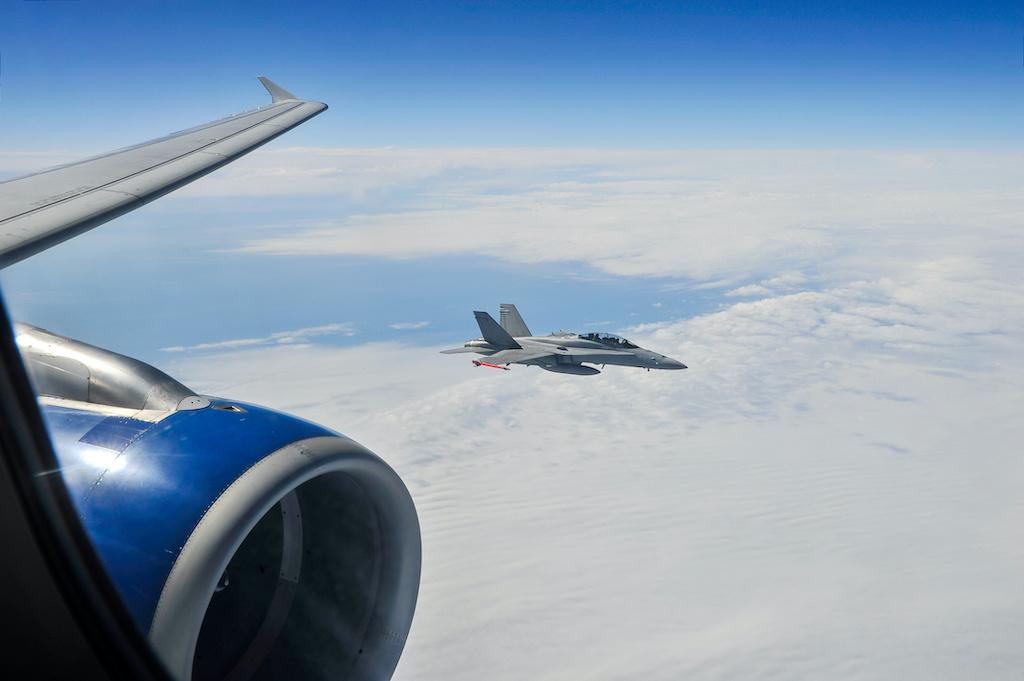
If the Belarus air piracy incident does inspire copycat inflight incursions, then it stands to reason that business aviation could also be a target for any despot who thinks a perceived enemy may be on board an international flight by a business aircraft operator. Obviously, when planning an international trip, particularly one that may take the operator into areas of the world where there has been unrest--especially combat zones--the onus is on the flight crew to accrue as much information on the region as possible. Handling and flight planning services can do some of this, but it still falls on pilots to educate themselves as much as possible on the situations that prevail under or near the planned route. The focus here is on risk assessment, or what dangers a particular flight path might present.
Resources like U.S. State Department security evaluations might be helpful in a very broad sense; however, these advisories often lack focus on important and useful details. Aviation security consultancies can provide much more detailed and, especially, up-to-date appraisals of risks to flight with a tight focus on the planned route.
Two other resources are especially useful. One is ICAO Document 10084, “Risk Assessment for Civil Aircraft Operation Over or Near Conflict Zones.” The other is Ops Group, the ad hoc aviation advisory organization and crowd-sourcing child of the social media era, supported by pilots, airline dispatchers and former air traffic controllers. (See “Inside Ops Group,” BCA, February 2020.) A current blog posting on the Ops Group website titled “Assessing the Risk: Operations Over Conflict Zones” is right on the money. Any time a credible airspace risk emerges anyplace in the world, Ops Group publishes an alert in both its daily and weekly feeds at https://ops.group
Then there are international NOTAMs, hundreds of them, and if a crew is able to isolate the ones applying to a 50-nm swath on either side of the chosen route, they might find the one that could save their and their passengers lives. We all remember the Malaysia Airlines Flight 17 loss in the Donbass region of the Ukraine in 2014, shot down by a Russian AA missile battery. What is not generally known is that prior to the Malaysia 17 destruction, 16 other aircraft had been shot down in the disputed airspace, all of them military transports. Three days before the Malaysia Boeing 777 crossed into the area on its final flight, the Ukrainian government issued a NOTAM establishing a no-fly zone in the area up to 32,000 ft. altitude without mentioning a reason for the warning.
Now, the flight path through the Donbass region was a popular corridor for east-west transits between Europe and Asia, and the day Malaysia 17 was shot down, several airlines whose dispatchers and crews had presumably read the NOTAM had rerouted around the troubled region. In fact, two had been avoiding the area for months. Did the Malaysia dispatchers and crew not see the NOTAM or otherwise choose to ignore it? Why didn’t the airlines that had been avoiding the area inform other operators of the dangers there? (This latter question was the impetus for former airline pilot and air traffic controller Mark Zee to found Ops Group as an international bulletin board on which operators and dispatchers can consult or post airspace warnings for all to view. ) The moral of this sad tale, if there is one, is to be informed on where you’re going and conduct your airspace risk analysis as if your life depended on it.
But on the day of the Belarus incident, there was no designated airspace risk for Ryanair 4978’s filed route from Athens to Vilnius. As reported earlier, hundreds of civil aircraft flew through the country’s airspace every week. So, the crew of Ryanair 4978 had no reason to be concerned there could be a flight risk--until receiving the radio call from Belarus ATC that there “might” be a bomb on board the aircraft. So, with no way of verifying the veracity of that information and no reason to doubt an ATC transmission-- plus a lethal military aircraft tucked up alongside the 737--the crew took the only action it could and diverted to Minsk. As it turned out, except for Protasevich and Sapego, whose welfare is currently unknown and assumed to be dire, the other 117 passengers and six crew, while certainly terrified and inconvenienced, were otherwise unharmed, as was the 737, which was later allowed to depart for its original destination.
Interceptions Can Be Legitimate
As a private or commercial business aviation operator finding yourself in a similar situation, e.g., our opening scenario, your best course of action is to do exactly what the Ryanair 4978 crew did: follow instructions, land and hope for the best. But understand that air-to-air interceptions, although rare, can be ordered for very legitimate reasons, the most common being loss of communication with ATC. In business aviation, the most memorable example of this was the chartered Learjet 35 flight carrying professional golfer Payne Stewart and colleagues on a trip from Orlando to Dallas in 1999. When the aircraft departed from its filed flight path while climbing to its cleared altitude of FL 390 and ATC lost radio contact with the crew, a U.S. Air Force F-16 from Eglin AFB, Florida, was dispatched to make an interception and conduct a visual inspection of the Learjet. The F-16 pilot reported that the windshield and cabin windows appeared to be fogged or iced and no movement in the cockpit could be detected. It was assumed (and later proved) that the aircraft had experienced a slow cabin pressurization failure and all the crew and passengers expired from hypoxia.
Of course, we all know the outcome of this sad story: The Learjet continued to fly a northerly course, eventually climbing to nearly 50,000 ft. When the F-16 pilot had to break away over fuel concerns, other jets from Air Guard squadrons intercepted and continued to fly formation with the stricken Learjet until the aircraft exhausted its fuel over South Dakota and crashed in a farmer’s field. (See “Under Pressure,” BCA, June/July 2020.) These interceptions by military aircraft (the obvious chase planes due to their superior speed and rate of climb) were an accepted procedure, not just to obtain contact with the deviating aircraft but in the interest of air and ground safety.
ICAO recognizes the necessity for this type of interception, as contact obviously must be maintained between aircraft and ATC. If aid can be rendered, that’s all for the better, but if the crew is incapacitated or the aircraft hijacked, ATC needs to know. So, because any interception of one aircraft by another can be hazardous, the solons in Montreal have published rules and procedures in Annex 2 for inflight interceptions for military and civil aircraft to follow to minimize risk.
According to an Ops Group post on the organization’s website on June 21, 2021, titled “Intercepted: What You Need to Know,” an intercepting aircraft--assuming the action is a legitimate maneuver in accordance with accepted ICAO Annex 2 procedures-- will want to know one or more of three things: first, to identify the subject aircraft; second, to communicate with it; and third, maybe, to redirect it to a specific airport. We will not go into all the reasons why a state that has scrambled military aircraft to intercept a civil one might want to do this, other than loss of comm or deviation from a cleared route, but suffice it to say, lying about a hazard aboard the targeted aircraft to get it to land under a state’s control is not one sanctioned by the U.N. and its aviation-standardization arm.
If carried out according to ICAO guidelines, the interception maneuver unfolds like aerial ballet. To not startle the crew of the target aircraft, the intercepting aircraft will approach from astern (i.e., behind). The lead aircraft (if a full flight of fighters has been dispatched) will slowly take up a position to the left and slightly above at a “safe” distance and attempt to contact the target aircraft on 121.5 MHz using the call sign “Interceptor.”
If comm is established, the target aircraft should key 7700 on its transponder. If no response is received, the interceptor may maneuver closer to attempt visual signals as per Annex 2. The target aircraft should rock its wings as acknowledgment that it has been intercepted. Assuming no comm is possible between the two aircraft, the commonly accepted signal from the intercepting aircraft is to lower and raise its landing gear, which means, “Follow me and land.” At night, signals are exchanged using nav lights.
The interceptor will then assume the lead and the target aircraft will follow to an airport “suitable” for its performance. Annex 2 is very clear that the entity directing the interception must select an airport within the performance parameters of the target aircraft, i.e., if an Airbus A320 or Gulfstream G650, a field with a 2,500-ft. runway and an elevation of 10,000 ft. will not be appropriate. Accordingly, if the field is unsuitable, the target aircraft should cycle its landing gear and flash its landing lights while circling at between 1,000 and 2,000 ft. AGL, indicating that the interceptor should lead it to an airport at which it can conduct a safe landing. It is understood by ICAO signatories that the intercepting aircraft and its authorizing state have a legal obligation and “duty to care” for the aircraft being forced to land and to ensure its safety. It should be noted that there have been cases of military aircraft “firing shots across the bows” of targets--either missiles or tracer rounds--to get their crews’ attention, but generally this has involved military-to-military encounters.
In the event of a hostile force-down, à la the Belarus incident, as the captain, the airplane and safety of everyone on it are your responsibility--to the extent that circumstances allow. Once on the ground, demand to contact the embassy or nearest consulate of your country--if reciprocal diplomatic relations exist--for assistance and representation. Same for the International Red Cross. Negotiate with your captors to obtain medical attention for anyone who needs it, lodging and food for your passengers, and permission for crew and passengers to contact their families.
Lukashenko pulled his stunt to collar an outspoken dissident out of fear that he will eventually be deposed and his oppressive regime will crumble. But given the repercussions and sanctions Belarus has invited from the rest of the international community--in addition to what may be coming in terms of suits for violations of international law--it is unlikely that air piracy will become a common weapon for beleaguered authoritarians to wield against their detractors. For the sake of safe, worldwide air transportation, we have to hope so.
Editor’s note: the concluding article in this series gets opinions from the Ops Group about reactions to the Belarus incident.





